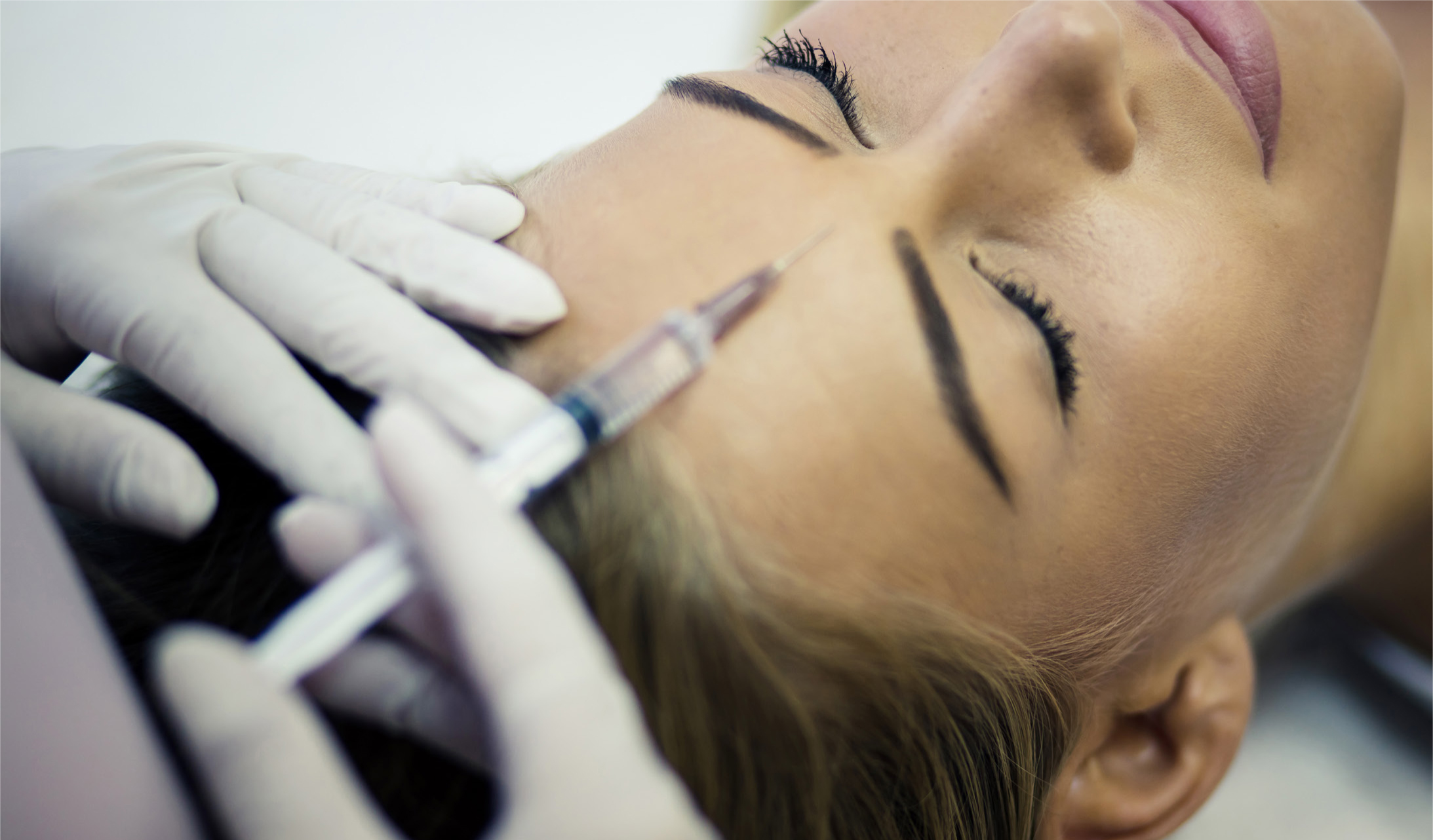
Non-invasive cosmetic procedures have become increasingly popular in the UK in recent years, including procedures involving the neurotoxin, botulinum, a highly effective drug for the treatment of facial lines (Li and Filobbos, 2020). Between 2002 and 2011, the number of people having cosmetic surgery procedures increased by approximately 285% (Nassab and Harris, 2013; Li and Filobbos, 2020). Although the overall safety and efficacy of botulinum neurotoxin treatments is good, around one in five clients report being unsatisfied with the results of their treatment, or experience an adverse effect (Sethi et al, 2021; Zargaran et al, 2022). In aesthetic practice, lines in the upper face (glabellar lines) are commonly treated with repeat-dose injections, but there have been some concerns regarding the long-term effects of repeated treatments with the most used formulations (Carr et al, 2021) such as the gBoNT-A and BoNT-B. It is therefore important for clinicians to understand the safety and efficacy of these elective procedures when offering them in practice.
IncobotulinumtoxinA mechanism of action
IncobotulinumtoxinA is a botulinum neurotoxin type A formulation, which markedly differs from other formulations currently approved in the UK for aesthetic treatment of upper facial lines (ie, onabotulinumtoxinA and abobotulinumtoxinA). It does not contain complex proteins and has higher concentrations of the active neurotoxin than the other formulations, which gives it a high specific biologic activity (Dressler, 2012). In contrast, the neurotoxin within onabotulinumtoxinA and abobotulinumtoxinA formulations is sited within a larger protein structure featuring a higher concentration of complex bacterial proteins entirely superfluous to the activity of the neurotoxin (Dressler, 2012; Hefter et al, 2020). The presence of this bacterial protein in the two other formulations licensed for use in the UK causes an immune reaction and the release of neutralising antibodies (Dressler, 2012). These neutralising antibodies are associated with resistance and unresponsiveness to botulinum toxin treatment by blocking its pharmacological effects.
This immune reaction has implications for both the efficacy and the duration of effect when these agents are used for non-invasive aesthetic treatments (Carr et al, 2021). The formation of neutralising antibodies can have an impact on the initial treatment, and the duration of its effect. It can also potentially heighten the risk of adverse side effects (Dressler, 2012), such as bruising, swelling, redness, headaches, and flu-like symptoms. There is, however, some empirical evidence indicating that repeated administration of this IncobotulinumtoxinA formulation at high doses is not associated with the formation of neutralising antibodies (Rahman et al, 2022). Therefore, incobotulinumtoxinA could prove to be a superior formulation for treatment of upper facial lines demonstrating lower antigenicity than the other formulations licensed for use in the UK, with comparable or better efficacy. This article will further explore the safety, efficacy and tolerability of incobotulinumtoxinA for the treatment of upper facial lines in adults over the age of 18 years.

Safety, tolerability and efficacy
Kerscher et al (2020) performed a two-stage Phase 2, randomised, double-blind study to investigate the duration of effect and safety of incobotulinumtoxinA at doses higher than the approved 20 units for glabellar frown lines. More specifically, 151 subjects were randomised 1:2:2 to receive a single treatment with 20U, 50U, or 75U INCO. Duration of effect was significantly longer for 75U vs 50U (P=0.0400) and 20U (P=0.0166). Duration of effect was also longer for 50U vs 20U, however; statistical significance was not reached (P=0.4349). All doses were well tolerated, and safety was consistent with the known safety profile of 20U INCO.
Fischer and colleagues (2020) investigated the safety, tolerability and efficacy of repeat-dose injections of incobotulinumtoxinA in the combined treatment of moderate-to-severe upper facial lines. They used a maximum concentration of 54–64 U of incobotulinumtoxinA in up to four, 120-day treatment cycles. Fischer et al (2020) only defined adverse events among participants as those occurring within the first 7 days after treatment, which raises implications regarding the risk of selection bias (Grey and Grove, 2020). While most complications associated with botulinum neurotoxin type A do occur within the first week after treatment, adverse events in the week subsequent have also been reported. Therefore, it is plausible that these authors did not capture all adverse events, and this could significantly affect the validity and reliability of these results (Polit and Beck, 2017).
Both studies then reported positive results in terms of the efficacy of incobotulinumtoxinA for the treatment of upper facial lines. Using the Merz Aesthetics Scale, Fischer et al (2020) reported a treatment response rate of 80%; while Kerscher et al (2020) reported the duration of effect being 210 days for the 75U dose group (95% CI:182–217 days), with this confidence interval suggesting good precision and reliability (Ratelle et al, 2019).
In terms of the safety and tolerability of incobotulinumtoxinA, Fischer et al (2020) reported that 17.1% of total treated subjects experienced a treatment emergent adverse event following administration of 20U when treating the glabellar lines, and between 10 to 20U for horizontal forehead lines, and 24U for lateral periorbital lines. However, only six of these participants experience adverse events attributable to treatment, representing 4.3% of the total sample. In Kerscher et al's (2020) study the incidence of treatment-related adverse events was 6.7%, 10.0% and 13.1% for doses of 20U, 50U or 75U, respectively. So, both studies suggest that incobotulinumtoxinA is a safe, effective and well-tolerated drug for the treatment of upper facial lines.
» It is important to regularly review the emerging research to ensure they practise in an evidence-based manner, providing the most effective and safe care for clients. «
Limitations
The methodological limitations identified in both studies suggest that their results are not sufficiently valid nor reliable to apply this confidently in practice settings. Crucially, well-controlled randomised control trials are necessary to definitively determine cause-and-effect relationships between the treatment of upper facial lines using incobotulinumtoxinA and efficacy, safety and tolerability-related outcomes (Oxford Centre for Evidence-based Medicine, 2022). Such studies must also include control groups to compare incobotulinumtoxinA and the other two formulations currently licensed for this use in UK settings, necessary to determine the superiority of any of these formulations. Certainly, given the growing popularity of non-invasive cosmetic procedures, including among younger members of the population and what is known about the comparative antigenicity of incobotulinumtoxinA versus these other formulations (Sethi et al, 2021; Zargaran et al, 2022), additional studies to determine whether incobotulinumtoxinA could offer a safer, better tolerated and efficacious formulation are warranted. Such studies should also ideally be larger, ensuring sample sizes are sufficient to adequately power analysis and use probabilistic sampling methods if feasible, to manage the risk of sampling bias present in both studies included in this article.
Conclusions
Kerscher et al (2020) and Fischer et al (2020) demonstrate that incobotulinumtoxinA is safe, effective, and well-tolerated treatment for upper facial lines. Aesthetic practitioners should consider this formulation for the treatment of upper facial lines, especially where clients have not tolerated other formulations, or where treatment has not achieved the desired result.
Furthermore, practitioners must be diligent in monitoring the evidence base for further studies, which may prove to offer more rigorous evidence concerning differences in the safety, efficacy and tolerability of incobotulinumtoxinA versus onabotulinumtoxinA and abobotulinumtoxinA. The volume of research conducted every year means that such conclusive results are likely to emerge, so without remaining abreast of advancements in understanding, aesthetic practitioners may fail to integrate these into practice without actively identifying new evidence. Thus, it is important to regularly review the emerging research to ensure they practise in an evidence-based manner, providing the most effective and safe care for clients.
The differences in the protein content of incobotulinum toxin A could have important implications for efficacy, safety and tolerability, especially in the longer term. Should such research then identify significant differences in these outcomes, a superior formulation and proper dissemination of such results could then contribute to important improvements for clients.
Key points
- IncobotulinumtoxinA is a botulinum neurotoxin type A formulation, which markedly differs from other formulations currently approved in the UK.
- It has shown to induce a lower immune reaction leading to fewer risks of neutralising antibodies.
- Aesthetic practitioners should consider this formulation for the treatment of upper facial lines, especially where patients have not tolerated other formulations, or where treatment has not achieved the desired result.
- By blocking its pharmacological effects, neutralising antibodies are associated with resistance and unresponsiveness to botulinum toxin treatment.
CPD reflective questions
- Are all aesthetic practitioners aware of the differences in composition within current approved toxins in the market?
- Are we doing enough research to ensure aesthetic practice is safe in the UK?
- How much do we truly know about the long-term effects and immunity of botulinum toxin?



